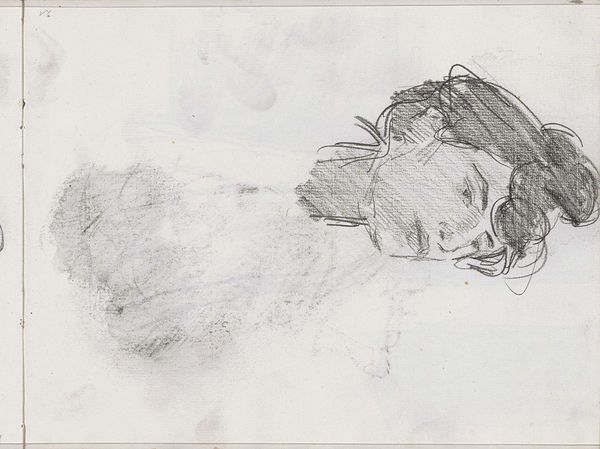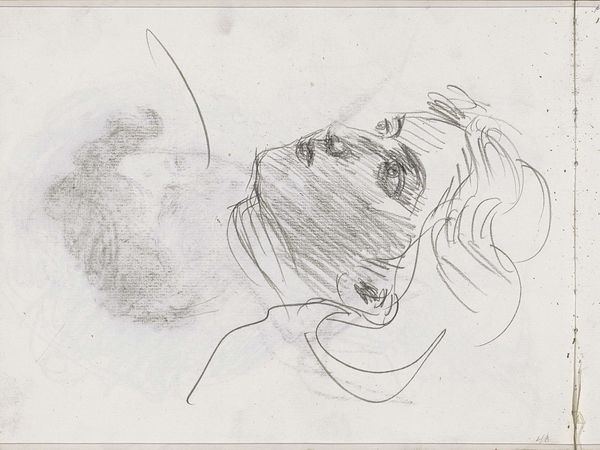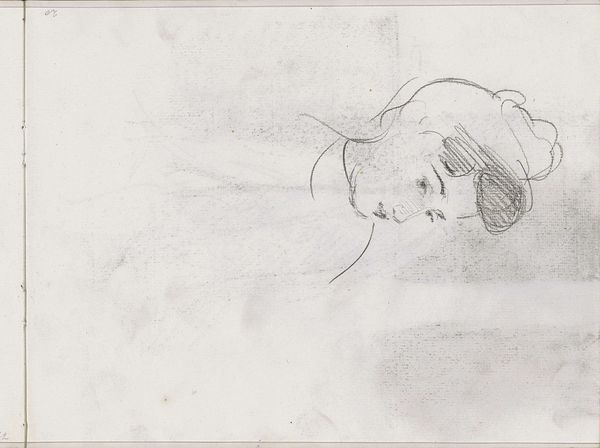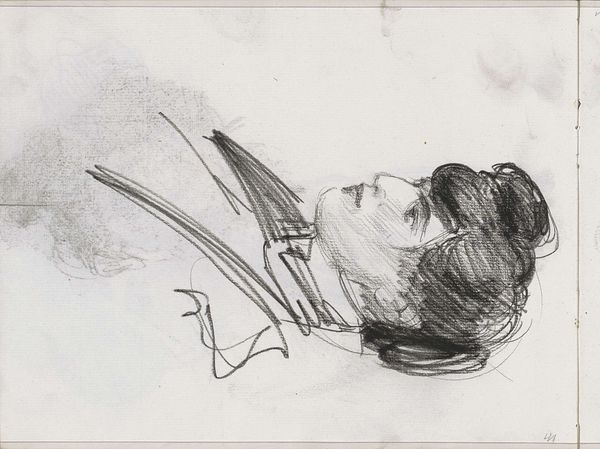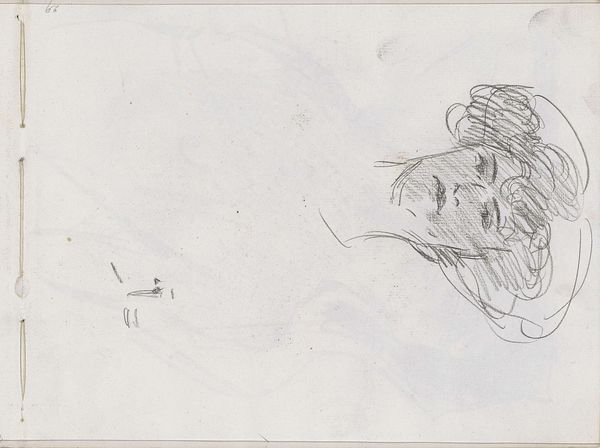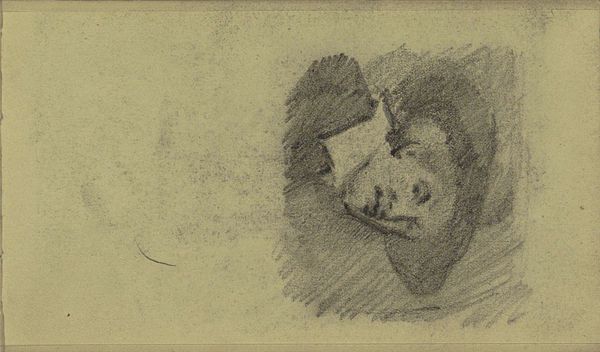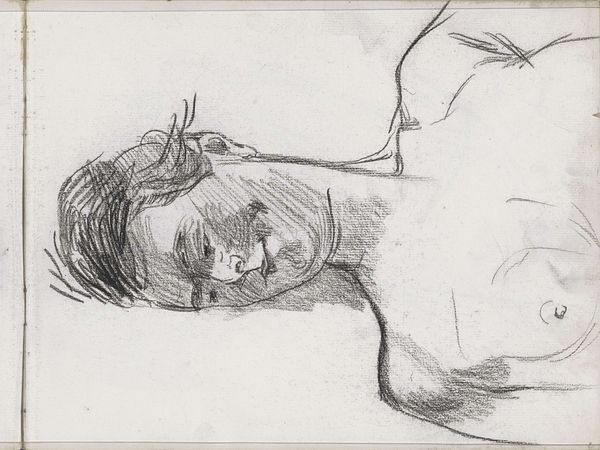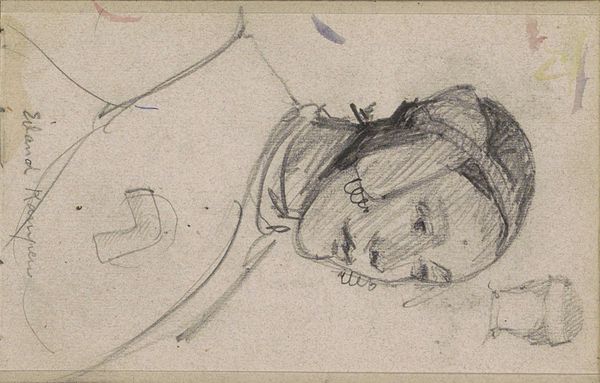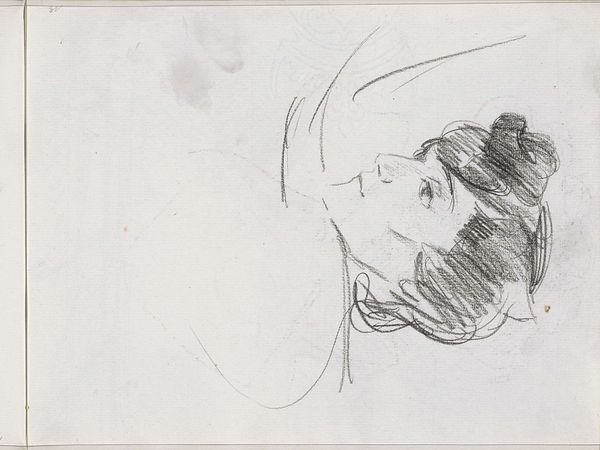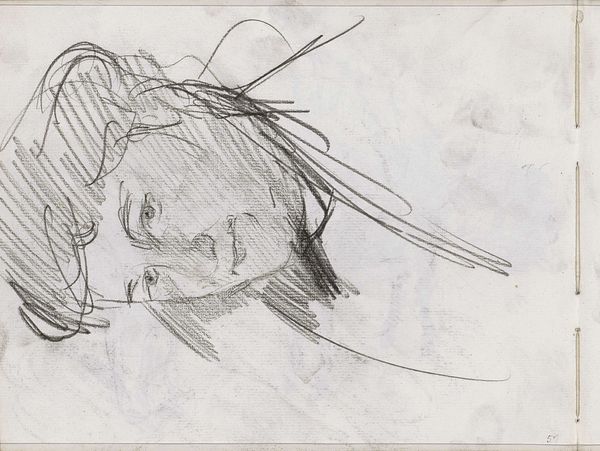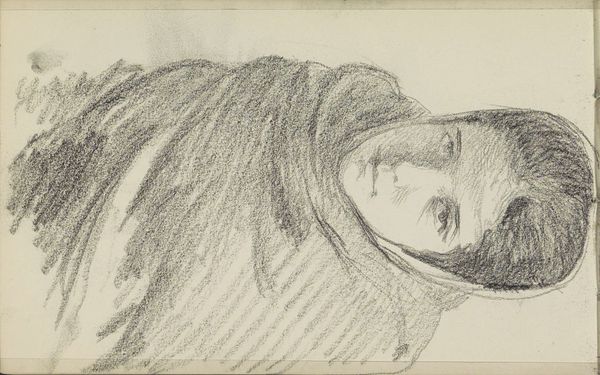
Copyright: Rijks Museum: Open Domain
Curator: Here at the Rijksmuseum we have in our collection a subtle work from Isaac Israels: *Vrouwenhoofd*, or "Head of a Woman." It's a pencil drawing dating roughly between 1875 and 1934. Editor: It's immediately striking—ethereal, almost fading into the paper. The dark, almost chaotic energy of the woman's hair contrasts sharply with the softness of her face. I get the impression she's emerging from a dream. Curator: That's a fascinating interpretation! Considering the artistic milieu Israels occupied, alongside figures like Breitner, we see the influence of impressionism not only in painting but transferred to works on paper like this. It wasn’t merely about capturing reality, but a fleeting impression of it. Editor: Indeed. There is something innately melancholic in its nature. It evokes this potent visual vocabulary connected to memory, of capturing the essence rather than the form. Look at how her downturned eyes create a profound sense of introspection, of being lost in her own thoughts, almost mirroring the inner turmoil often associated with that period's Symbolist movement. Curator: And the role of sketchbooks in the creative process at this time cannot be ignored; this “Vrouwenhoofd” shows the informal capturing, the quick impressions and gestures and thoughts from the artist’s hand—before it might be something more elaborate. In some ways, they reveal the "behind the scenes" aspects of art production. Editor: Absolutely, and that informality creates such an emotional impact! Even the visible binding of the sketchbook suggests that it wasn’t meant for public viewing. In looking at her image now we find an act of revealing and memorializing not just the image but its associated emotions. Curator: So much can be gleaned from a preliminary sketch like this. The museum's role, of course, is to not only show but provide these moments of thought regarding artistic intention as well as larger socio-political influences on creators such as Israels. Editor: Yes, looking at this humble little work now has helped us to recall that these objects retain so much cultural resonance far beyond their aesthetic function.
Comments
No comments
Be the first to comment and join the conversation on the ultimate creative platform.
